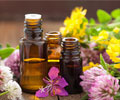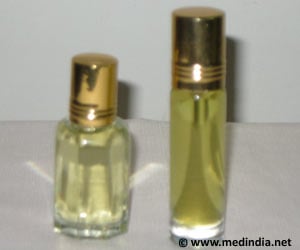Essential oils can help reduce scars and treat wounds much faster. A new study reveals that a chemical compound found in essential oils helps improve the healing process.
- Essential oils can help reduce scars and treat wounds much faster because of a chemical compound present in them
- There occurs a change even in the gene expression, which helps //in less scar formation and a full recovery
- Also, can help develop drug and drug delivery methods using the chemical compounds found in essential oils
"This is the first finding at the chemical-compound level showing improved wound healing in addition to changes in gene expression in the skin," said Sachiko Koyama, corresponding author on the paper, who, at the time of this research, was an associate scientist at the IU School of Medicine and is currently a visiting scientist in the IU College of Arts and Sciences’ Department of Biology. "The way gene expression changed also suggests not only improved wound healing but also the possibility of less scar formation and a more full recovery.
"It’s an example that essential oils work; however, it’s not through our sense of smell."
Essential oils are natural, concentrated oils extracted from plants. Their use by humans dates back to ancient Egypt, but the scented oils have experienced a resurgence in popularity in the U.S. over the past few years, with many people using them for aromatherapy.
Koyama, whose original field of study is pheromones, said she wasn’t interested in essential oils at first. The project started when she saw several students studying the wound healing process in mice in the Medical Sciences Program at the IU School of Medicine-Bloomington.
"In the wound healing process, there are several stages, starting from the inflammatory phase, followed by the cell proliferation stage and the remodeling stage," she said. "I thought maybe wound healing would be accelerated if inflammation was suppressed, stimulating an earlier switch from the inflammatory stage to the next stage."
Although the study’s results are promising, Koyama said she wouldn’t recommend that people start treating their injuries with just any essential oils, as her research applies to a very specific chemical compound with known purity, diluted in a specific concentration.
"It’s not very precise to use the essential oils themselves because there are differences," she said. "Even if you say you used lavender, when the lavender was harvested, where it was harvested, how it was stored -- all of this makes a difference in the chemical composition."
Koyama said further research is required to figure out how beta-caryophyllene might be used to develop new treatments for skin wounds in humans. She said she hopes to better understand the mechanisms that accelerate the healing process and to find a combination of chemical compounds that could be used together to accelerate drug delivery and chemical stability, which is important for avoiding or suppressing allergic responses caused by oxidation of the chemical compounds.
"We still need thorough scientific studies at the chemical-compound level and also to test the combinations of these chemical compounds," Koyama said. "For example, there are studies showing that linalool -- another compound found in lavender -- can suppress anxiety through the olfactory system. There could be the best combinations of chemical compounds at specific ratios, and we might be able to do prescriptions of aroma chemical compounds, depending on the specific treatment goals.
"There are many things to test before we can start using it clinically, but our results are very promising and exciting; someday in the near future, we may be able to develop a drug and drug delivery methods using the chemical compounds found in essential oils."
Source-Eurekalert











